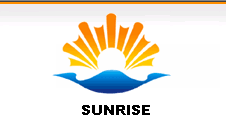An experiment originally designed to fly on the International
Space Station (news - web sites) (ISS) led a team of researchers
to develop a completely new type of glass, a material formed while
floating in mid-air in a NASA (news - web sites) laboratory on
Earth.
Using static electricity fields to levitate the material, scientists
were able to construct a pure glass, free of any contamination
typically associated with containers. It could serve as the centerpiece
for new medical and industrial lasers, as well as have broadband
Internet applications.
\"I think there\'s a lot of potential for this glass,\"
said Rick Weber, director of the Glass Products Division of Containerless
Research, Inc., which invented a whole family of the new transparent
material. \"We\'ve got a wide composition field, so one [glass]
can be tuned for a particular use.\"
Weber told SPACE.com that new the glass is currently being put
through its paces in several validation projects for applications
in high-density lasers, and as the glass components for low-cost,
compact broadband devices.
Levitating glass
The new material, known as REAl glass -- short for Rare Earth
Aluminum oxide -- was first developed at NASA\'s Electrostatic
Levitator (ESL) laboratory at Marshall Space Flight Center in
Huntsville, Alabama.
Scientists there routinely use static electricity to allow their
experiments to defy gravity inside a vacuum chamber, then zap
them with lasers to turn them into floating molten balls of material
that can later cool without any interference from a crucible or
container.
\"The ESL is a very pure way to look at what a material
does,\" said Jan Rogers, a facility scientist for the ESL.
\"In an oven or container of any sort you have contact with
the container wall, and at high temperatures a sample can interact
with those walls, absorbing specks of dust and having a chemical
reaction with the container.\"
By melting and cooling a levitated material, scientists can understand
not just its formation, but its inherent physical properties.
Surface tensions keeps molten samples together which, when cool,
coalesce into tiny spheres.
At the most fundamental level, making REAl glass uses the same
method used by glass-makers for centuries, namely mixing materials
together, melting them, then cooling them into a solid. But it\'s
the levitation that gives REAl glass its kick. The process allowed
researchers to imbue their glass with a number of attractive properties,
such as chemical stability, infrared transmission and laser activity.
\"Other glasses tend to have just one of those properties,
and at least one weakness,\" Weber said. \"They could
be really good at infrared transmission, but dissolve in water
so you wouldn\'t want a window made out of it.\"
Laser applications are key for REAl glass, since the material
could serve as the \"gain medium,\" a component that
amplifies light into a concentrated beam capable of cutting metal
for car assembly or human tissue during surgery. REAl glass laser
gain mediums could provide a range of available wavelengths to
give surgeons more control of beam intensity, depending on tissue
type and surgery, he added.
Consumer glass
Once Containerless Research scientists understood the basics
of REAl glass formation, they were able to adapt the technology
away from its dependency on electrostatic levitation. The step
was a crucial one for commercial purposes, since NASA\'s ESL facility
is only powerful enough to levitate tiny sample materials up to
three millimeters wide and 70 milligrams in weight.
\"So we\'re not talking about golf balls and pineapples
here,\" Weber said of the ESL\'s production capabilities.
\"For commercial purposes, we needed at least rods and plates
of the glass.\"
Weber\'s team was able to devise a small-scale production plan
that uses platinum crucibles to melt REAl glass and cooling forms
that shape into commercial rods and plates, all without taking
away the materials positive properties.
A glassy side project
Containerless Research scientists did not originally seek to
develop REAl glass outright when they approached NASA with a proposed
space station experiment. That proposal, which used the Marshall
lab as a proving ground before reaching the orbiting outpost,
sought to explore the properties of molten oxides and aluminates.
\"Most of my customers are space flight candidates,\"
said Rogers of the researchers who use the ESL facility. \"Some
of them have experiments for the ISS, where they would be using
the next generation levitator.\"
That instrument, an electromagnetic levitator for space-based
material science studies, is being developed for the European
Space Agency\'s Material Science Laboratory aboard the Columbis
module of the ISS. The module was scheduled to be launched via
space shuttle in October 2004, though NASA does not expect another
shuttle flight until at least March 2005.
\"When the appropriate instrumentation is available, we
still hope to conduct that flight experiment,\" Weber said.
Other scientists have used some form of levitation, though not
exactly Weber\'s approach, for glass making, both on Earth and
in space. Delbert Day, a NASA-funded researcher at the University
of Missouri-Rolla, for example, used sound waves to levitate glass
samples in order to study higher-quality glasses. He also designed
microgravity experiments for the space shuttle. |



